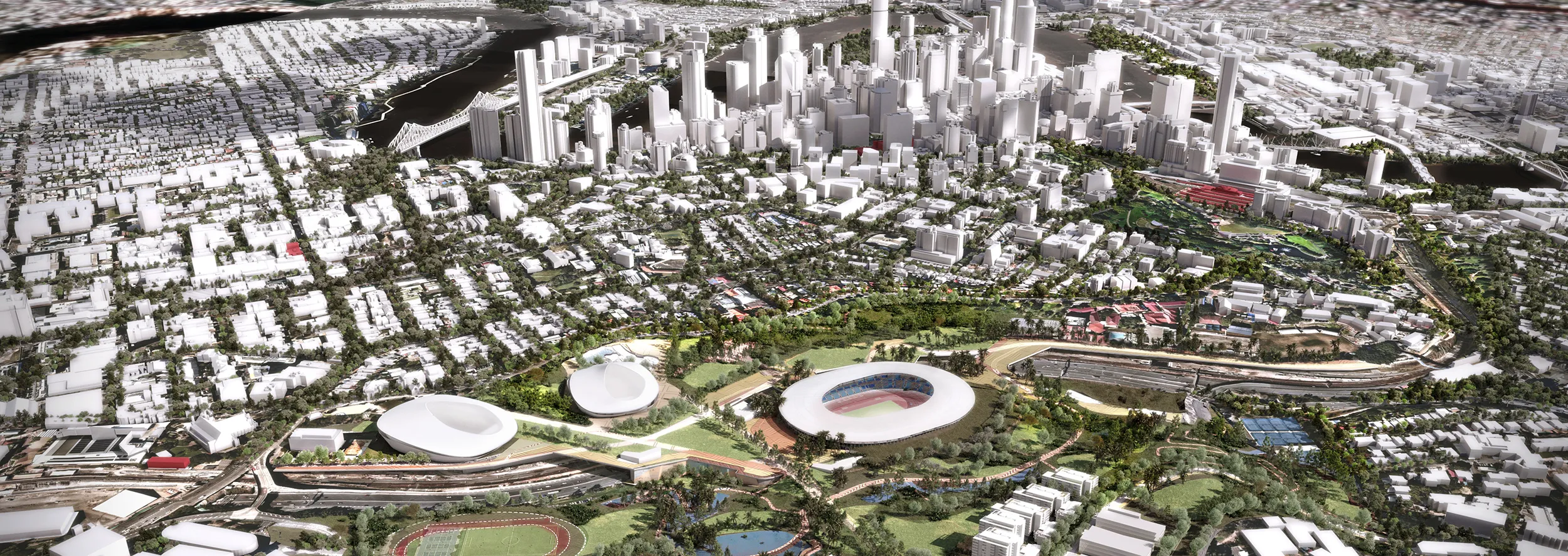
As the world hurtles forward into the 21st century, the need for innovative and sustainable urban design and master planning has become paramount. In the quest for more liveable, environmentally friendly, and socially equitable cities, the concept of the ‘30-minute city’ has emerged as a promising model. Moreton Bay, one of Australia's fastest-growing regions, has embraced this vision, setting itself on a path to become a 21st-century lifestyle-focused polycentric city. This ambitious transformation, driven by collaboration with the Moreton Bay Regional Council (now Moreton Bay City) and Archipelago, has the potential to become a trailblazing example for the rest of Australia.
The 20th century concept of a traditional city form represents a carbon-intensive, transport-dependent, and overwhelmingly urban environment. Although productive, this model presents social and environmental limitations which are increasingly concerning in our ever-growing and warming cities. With employment choice and economic capital concentrated in the city centre, social inequality thrives through reduced distribution of wealth and opportunities in outer suburbs. The monocentric city form contributes to cycles of inequality, imbalance, and discrimination across all platforms, and requires thoughtful transformation.
The transition to a polycentric city model would introduce a loose-fit, lifestyle-rich landscape of opportunities for working, living, learning and leisure – with a low rise, distributed ecosystem of distinctive urban centres. The strategy re-biases the north-south movement corridors with east-west connections derived from both infrastructure and natural assets. These east-west connections reinforce accessibility through the potential for high-quality and efficient movement throughout the Moreton Bay region. To unlock the regions’ full polycentric potential, the activation of existing riparian corridors is paramount. By leveraging these east-west corridors as green connections to supplement existing infrastructure, pedestrian and e-mobility innovation is invited to reconnect the city to the bay.
The polycentric city distributes opportunities more equitably, creating ways of living that reduce the socio-economic divide and encourages a more egalitarian society. The future Moreton Bay city will be less a place that people go ‘through’ on their way to the Sunshine Coast and increasingly a place that people go ‘to’ for work, learning, leisure, tourism, and entertainment.
The population projections for Moreton Bay are staggering, with an estimated 10,000 people expected to move to the region annually. By 2041, the population is predicted to surpass that of the entire state of Tasmania. The Polycentric city vision project has been widely consulted to lift our aspirations for what is possible through this moment of change, and to translate people’s fears into excitement and optimism for our shared vision for a truly great city.
As a project poised for successful implementation, it holds immense potential to advance the reach of master planning and strategic planning far beyond Moreton Bay. Archipelago worked directly with the Moreton Bay Region to catalyse the initiative and subsequently conceived and authored “Moreton Bay City”, a documented strategy and vision for Australia’s first sub-tropical polycentric city. This work became the primary engagement tool used to communicate the city vision through stakeholder engagement, and subsequently led to the submission to the Electoral Commission of Queensland (ECQ) Local Government Change Commission (Change Commission) to change the name of the Council from “Moreton Bay Regional Council” to what it is now named – “City of Moreton Bay”.
The 30-minute city model, exemplified by Moreton Bay's polycentric vision, presents a promising opportunity to reimagine urban living for the 21st century. By decentralizing opportunities and embracing a more balanced, lifestyle-rich landscape, the city can become a paragon of sustainability, equality, and connectivity. As the region continues to grow and evolve, the path it chooses now will shape its future.



